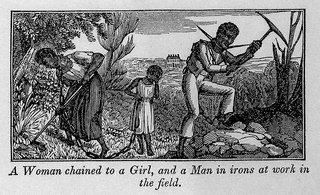
Marriage, also called matrimony or wedlock, is a culturally and often legally recognised union between people called spouses. It establishes rights and obligations between them, as well as between them and their children, and between them and their in-laws. It is nearly a cultural universal, but the definition of marriage varies between cultures and religions, and over time. Typically, it is an institution in which interpersonal relationships, usually sexual, are acknowledged or sanctioned. In some cultures, marriage is recommended or considered to be compulsory before pursuing sexual activity. A marriage ceremony is called a wedding, while a private marriage is sometimes called an elopement.
Cohabitation is an arrangement where people who are not married, usually couples, live together. They are often involved in a romantic or sexually intimate relationship on a long-term or permanent basis. Such arrangements have become increasingly common in Western countries since the late 20th century, led by changing social views, especially regarding marriage.
De facto describes practices that exist in reality, regardless of whether they are officially recognized by laws or other formal norms. It is commonly used to refer to what happens in practice, in contrast with de jure.

A wife is a woman in a marital relationship. A woman who has separated from her partner continues to be a wife until their marriage is legally dissolved with a divorce judgment. On the death of her partner, a wife is referred to as a widow. The rights and obligations of a wife to her partner and her status in the community and law vary between cultures and have varied over time.
Common-law marriage, also known as non-ceremonial marriage, sui iuris marriage, informal marriage, de facto marriage, more uxorio or marriage by habit and repute, is a marriage that results from the parties' agreement to consider themselves married, followed by cohabitation, rather than through a statutorily defined process. Not all jurisdictions permit common law marriage, but will typically respect the validity of such a marriage lawfully entered in another state or country.
A domestic partnership is an intimate relationship between people, usually couples, who live together and share a common domestic life but who are not married. People in domestic partnerships receive legal benefits that guarantee right of survivorship, hospital visitation, and other rights.
A marriage license is a document issued, either by a religious organization or state authority, authorizing a couple to marry. The procedure for obtaining a license varies between jurisdictions, and has changed over time. Marriage licenses began to be issued in the Middle Ages, to permit a marriage which would otherwise be illegal.

Same-sex marriage has been legal in Alberta since July 20, 2005 upon the granting of royal assent to the federal Civil Marriage Act. Alberta was one of the four Canadian provinces and territories where same-sex marriage had not been legalised before the enactment of the Civil Marriage Act, along with Prince Edward Island, the Northwest Territories and Nunavut.
Couples therapy attempts to improve romantic relationships and resolve interpersonal conflicts.
Civil registration is the system by which a government records the vital events of its citizens and residents. The resulting repository or database has different names in different countries and even in different subnational jurisdictions. It can be called a civil registry, civil register, vital records, and other terms, and the office responsible for receiving the registrations can be called a bureau of vital statistics, registry of vital records and statistics, registrar, registry, register, registry office, or population registry. The primary purpose of civil registration is to create a legal document that can be used to establish and protect the rights of individuals. A secondary purpose is to create a data source for the compilation of vital statistics.
In modern society, the role of marriage and its termination through divorce have become political issues. As people live increasingly mobile lives, the conflict of laws and its choice of law rules are highly relevant to determine:
Conflict of marriage laws is the conflict of laws with respect to marriage in different jurisdictions. When marriage-related issues arise between couples with diverse backgrounds, questions as to which legal systems and norms should be applied to the relationship naturally follow with various potentially applicable systems frequently conflicting with one another.
A marriage certificate is an official statement that two people are married. In most jurisdictions, a marriage certificate is issued by a government official only after the civil registration of the marriage.

This article summarizes the same-sex marriage laws of states in the United States. Via the case Obergefell v. Hodges on June 26, 2015, the Supreme Court of the United States legalized same-sex marriage in a decision that applies nationwide, with the exception of American Samoa and sovereign tribal nations.
Common-law relationships in Manitoba are government-sanctioned relationships available to both same-sex and different-sex unmarried couples in the Canadian province of Manitoba. While not as extensive as the rights and benefits of marriage, these relationships provide some important benefits to unmarried couples. Registration is voluntary; many of the laws apply automatically to any couple in the province after living together for several years.
Marriage in the United States is a legal, social, and religious institution. The marriage age is set by each state and territory, either by statute or the common law applies. An individual may marry without parental consent or other authorization on reaching 18 years of age in all states except in Nebraska and Mississippi In Puerto Rico the general marriage age is also 21. In all these jurisdictions, these are also the ages of majority. In Alabama, however, the age of majority is 19, while the general marriage age is 18. Most states also set a lower age at which underage persons are able to marry with parental or judicial consent. Marriages where one partner is less than 18 years of age are commonly referred to as child or underage marriages.
Common-law marriage, also known as sui juris marriage, informal marriage, marriage by habit and repute, or marriage in fact is a form of irregular marriage that survives only in seven U.S. states and the District of Columbia along with some provisions of military law; plus two other states that recognize domestic common law marriage after the fact for limited purposes.
Same-sex unions in the United States are available in various forms in all states and territories, except American Samoa. All states have legal same-sex marriage, while others have the options of civil unions, domestic partnerships, or reciprocal beneficiary relationships. The federal government only recognizes marriage and no other legal union for same-sex couples.
The Supreme Court decision in Obergefell v. Hodges that legalized same-sex marriage in the states and most territories did not legalize same-sex marriage on Indian reservations. In the United States, Congress has legal authority over tribal reservations. Thus, unless Congress passes a law regarding same-sex marriage that is applicable to tribal governments, federally recognized American Indian tribes have the legal right to form their own marriage laws. As such, the individual laws of the various United States federally recognized Native American tribes may set limits on same-sex marriage under their jurisdictions. At least ten reservations specifically prohibit same-sex marriage and do not recognize same-sex marriages performed in other jurisdictions; these reservations remain the only parts of the United States to enforce explicit bans on same-sex couples marrying.

Slave marriages in the United States were typically illegal before the American Civil War abolished slavery in the US. Enslaved African Americans were legally considered chattel, and they were denied civil and political rights until the United States abolished slavery with the passage of the Thirteenth Amendment to the United States Constitution. Both state and federal laws denied, or rarely defined, rights for enslaved people.




